Guy Dunlap’s Garage Shop Solutions
Guy Dunlap's shop houses his healthy collection of tools, and at night transforms into a place you can park a car of all things!Like a lot of other woodworkers, my shop is in a two-car garage. This can cause problems not only with space for tools and machinery, but also workflow and storage. My situation also dictates that for more than six months out of the year, my wife will park her car in the garage. While this does present some difficulties, I have managed to arrange things in a way that not only enables me to set up and tear down the shop quickly, but also offers decent workflow and storage.
Layout
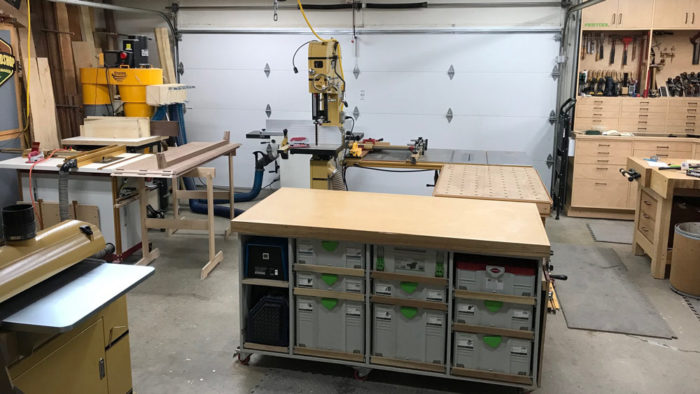
My shop layout has evolved over the years, and hopefully some of the things I have learned can be helpful to you. The first and probably the most important thing is mobility. With the exception of my lumber rack and small workbench, every machine in my shop has a mobile base and all the shop furniture I’ve made is on casters. This really gives me the ability to move things around and makes it easier to increase the infeed and outfeed space when a project piece calls for it.
Machine layout in a midsize shop:
Mike Korsak choose to put most of his machines in one
corner of his shop to keep his dust collection needs centralized
Let’s talk about efficiency. There is always a lot of discussion about the placement of machines and work stations for better workflow. While this has stayed in the back of my mind, it has never been the most important thing to me. Since my shop is small, I really don’t find myself having to walk around a lot to be able to go through the different stages of milling and machining. My main concern recently has been placing the machinery to maximize the infeed/outfeed space, allow for efficient dust collection, and enable easy setup/teardown of the shop. If I had more room, workflow would be more of an important factor in the layout and placement of the tools.
Dust Collection
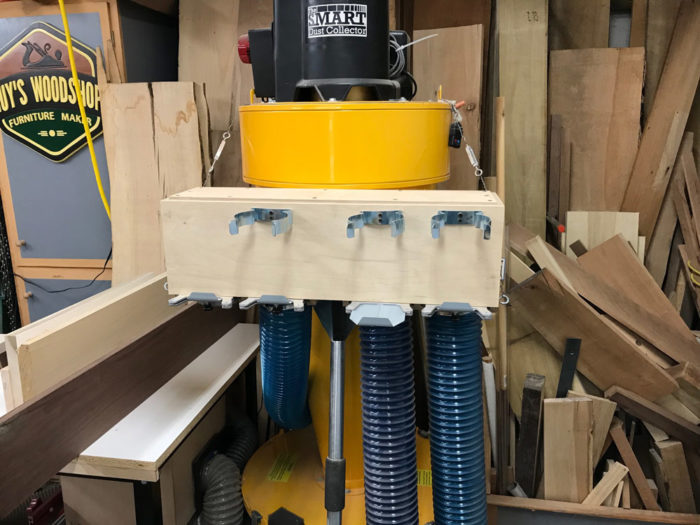
I have always had a portable dust collection system and until recently this required me to switch a single hose from machine to machine as needed. A little over a year ago, I decided this needed to change. Without the ability to install permanent ducting, I decided to build a “manifold” that is attached to the front of the dust collector. This manifold has four ports with blast gates attached to it. I have three hoses attached to it right now. One goes to my jointer/planer combo, one to my router table, and one to my tablesaw. Whenever I want to use a machine, I just open the blast gate and I’m ready . There are only two instances when I have to move a hose. The hose for my tablesaw gets moved to my bandsaw when needed (about a foot apart) and I also move that hose to my drum sander when needed.
Video: See how the Oneida makes the Dust Gorilla Pro
Electrical
I used to have two extension cords, one for the 240-volt machines, and one for the 120-volt machines. I would switch the cord from machine to machine (along with the dust collector hose). Several years ago, I took the plunge and added more breakers to my electrical box and with the help of an electrician, ran extra 120-volt and 240-volt service. I now have all the machines hooked up and ready to power on when needed. Between the dust collector manifold and the extra electrical, moving from machine to machine is as simple as making sure the blast gate for the machine is open, and turning the switch. This has greatly increased my efficiency when working.
Storage
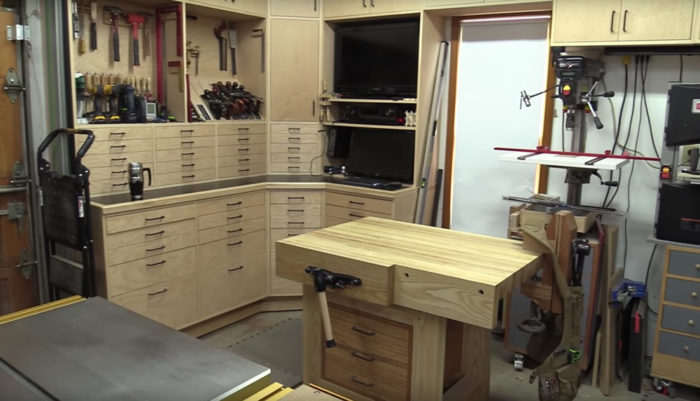
I really like tools. As a result, I collect all kinds of little specialty tools—from layout and marking tools to work-holding devices to jigs and well, you get the idea. The real issue is that I have been buying and collecting these tools for well over 30 years now, and I still find tools I convince myself I need. There are two roads you can go down here: have a purge of tools every now and then or find a place to store them.
One of the most valuable lessons I have learned is to use shallow drawers instead of cabinets to store things. While I do have cabinet space, it is mostly reserved for larger tools that I don’t use that often. In one corner of my shop, I built cabinets that house 20 drawers in the lower cabinets, 20 drawers at mid-level, and eight upper cabinets. The lower drawers vary in depth from 12 in. to 2 in., while the middle section of drawers are all at 2-in. depth. The shallow drawers give me the ability to store an amazing number of tools without a lot of wasted space. In one corner of my shop, I have 50 drawers.When making shop furniture, I’ve added drawers whenever possible; I have them in the mobile bases for some of the tools, under the workbench, and under the router table.
All this storage really helps when it’s time to pick up after working on a project. Since everything has a home, I don’t find myself moving things around from one horizontal surface to another. Things just go back in their designated spot.
If you keep these things in mind when laying out your own garage shop—getting everything to fit in the space you have, performing setup and teardown quickly, and being able to use each machine without additional setup—as well as considerations such as lighting and heating/cooling, your shop time will be a much more enjoyable experience.
Guy Dunlap is a furniture maker in Indianapolis. He teaches woodworking both in his shop, and online on his popular YouTube channel. Guy also co-hosts two woodworking podcasts–Woodshop Life with Huy Huynh and Sean Walker, and also the Against The Grain podcast with Freddy Roman and Justin DiPalma.





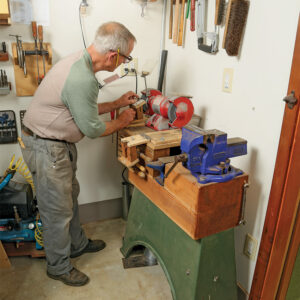
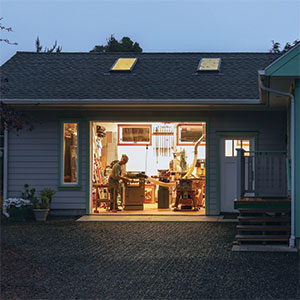





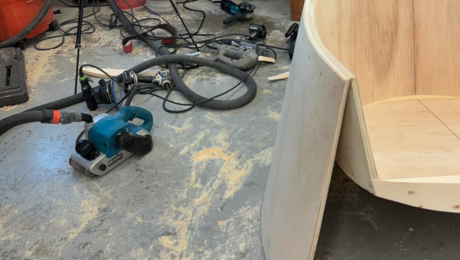
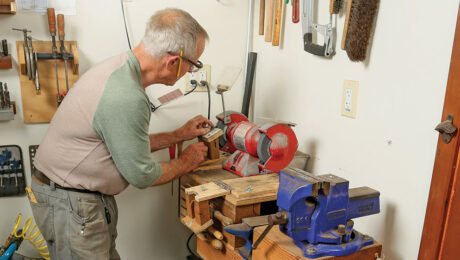








Comments
I follow Guy on YouTube, this "Guy" is really talented. I learn much from him. He makes Incra products sing!
Not sure I’ve seen any of Guy’s videos on YouTube but I’m certainly going to check it out. I like your DC manifold but I’m curious about airflow. Do you notice any decrease in the DC’s suction? Is the manifold just an open box inside or do you have any baffles to direct the airflow to the main intake port?
The manifold is just an empty box. I wanted to see how much CFM I lost with it before I started messing around with baffles. I can't remember the CFM loss numbers, however it was inconsequential. I am still pulling quite a bit with the system.
I also have a hobbyist shop in a 2 car garage. I appreciated your remark that large-tool layout for efficient workflow gets a lot of discussion, but it may not be highly relevant for our situation. In my case, one explanation is that every project is different, so there is no single workflow to design towards.
Having every tool be readily usable — plugged in, with dust collection, no stuff piled on it, infeed/out feed clear — is what I’ve tried to do.
Just starting in my new two car garage shop. This shop looks beautiful. Do you have plans for that magnificent workbench?
Log in or create an account to post a comment.
Sign up Log in